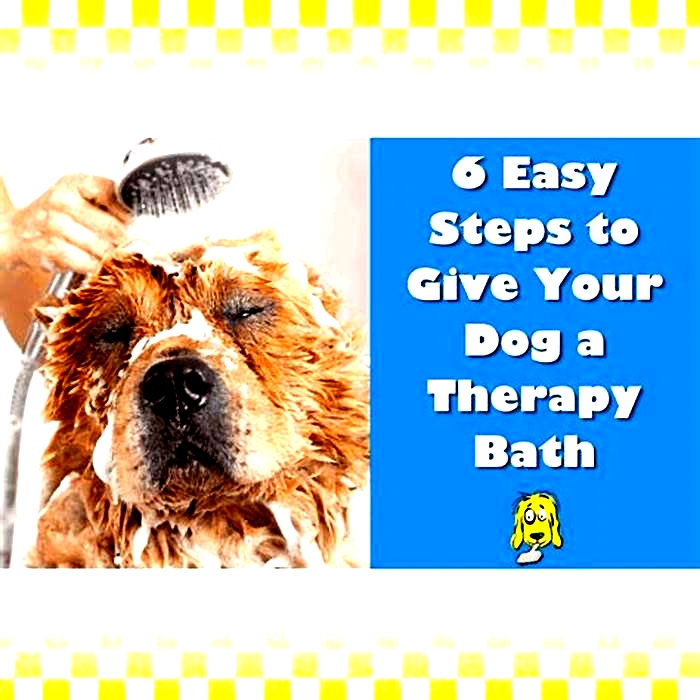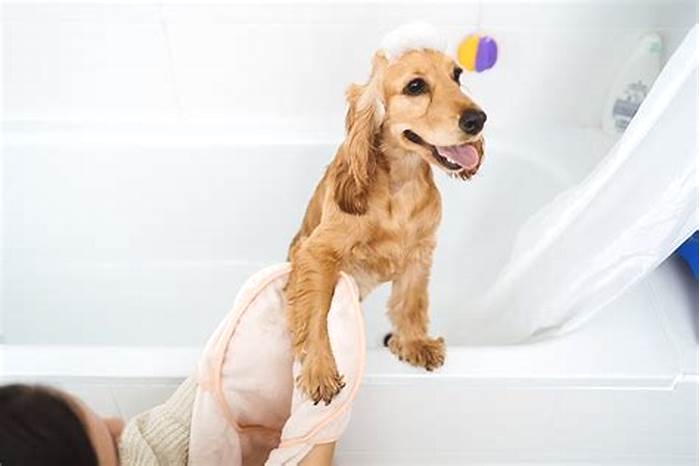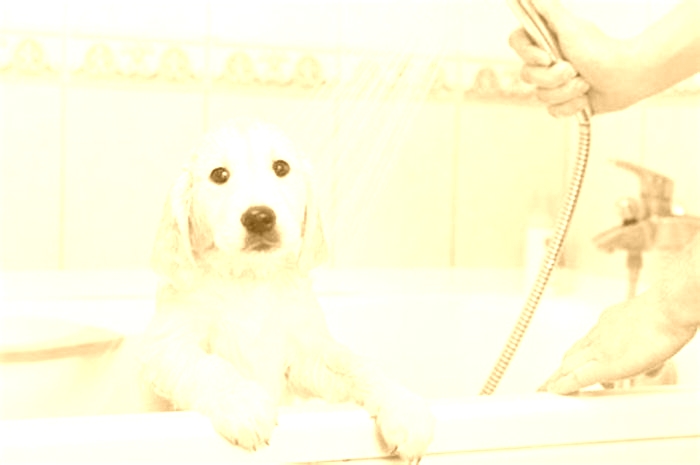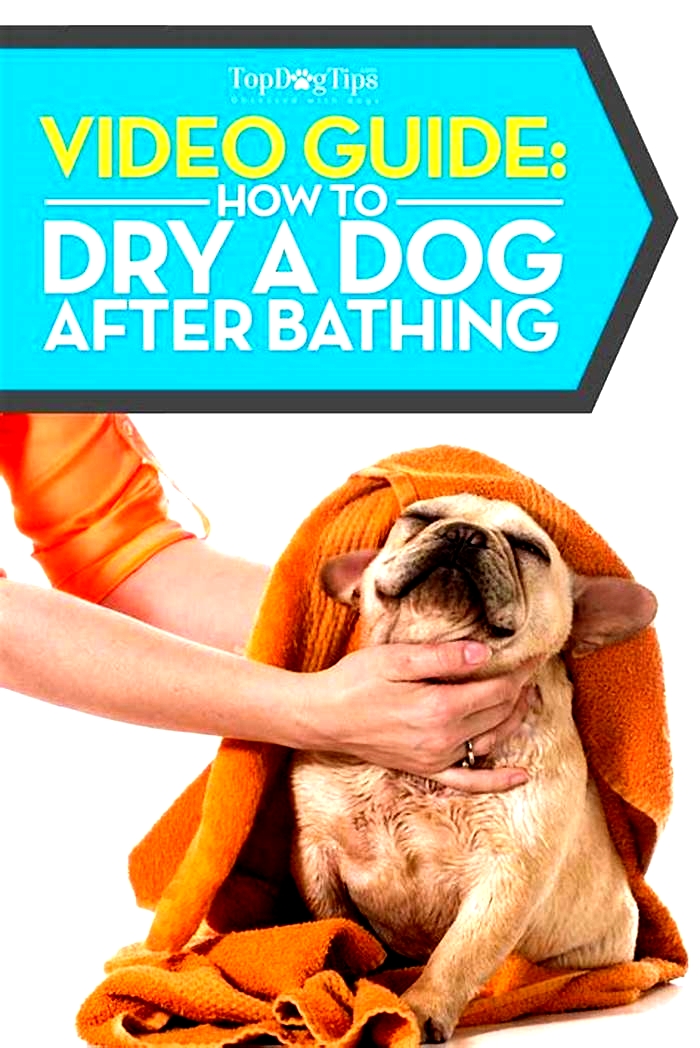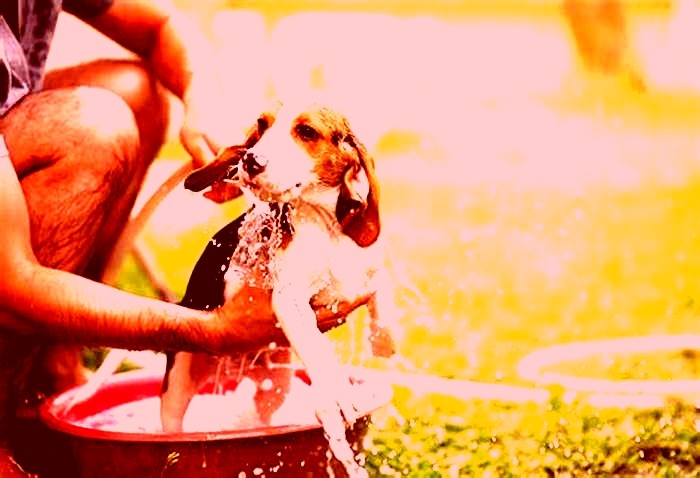How often can I give my dog a flea bath
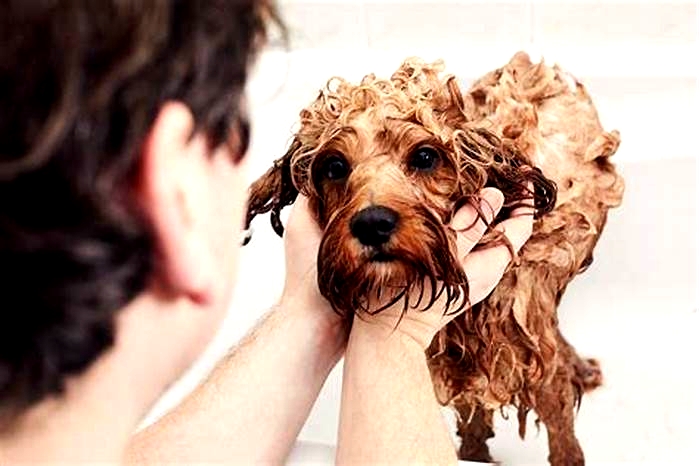
How to give a dog a flea bath
It's only natural to wonder how to give a dog a flea bath, especially if you notice fleas scurrying around while youre petting your dog. Before you rush out to the pet supply store and buy flea shampoo, however, step back and think for a minute. Pesticide-containing flea baths can offer benefits to some dogs with a heavy flea infestation, but they also come with risks. Do your research to determine whether your pooch will benefit from a flea bath, or whether an alternative flea treatment for dogs may be a better option.
Do dogs need a bath for fleas?
Bathing your dog can be an effective way to remove large numbers of adult fleas. While some shampoos contain pesticides that are specifically designed to kill fleas and other insects, almost any dog shampoo will reduce the number of fleas on your pup, if used correctly. Sudsing your dog up and allowing the lather to remain on your dogs coat for ten minutes will suffocate fleas, killing many fleas in a manner similar to a flea bath.
While a bath can kill adult fleas, it doesn't do anything to address flea eggs and flea larvae in your environment. Did you know that a single female adult flea can lay up to 40-50 eggs per day? If your dog has enough fleas that you are noticing them on your dogs skin, countless eggs have probably already been shed in your environment. Even if you remove all of the adult fleas on your dog with a bath, your dog is bound to become reinfested as soon as they return to your home or yard. In order to treat fleas effectively, you need a longer-acting solution that will not only kill the adult fleas but also prevent reinfestation.
Alternative flea treatments
Effective flea control requires the use of a long-acting flea preventative. This way, when your dog once again encounters fleas in the environment, those fleas do not have the opportunity to set up an infestation.
The most effective flea preventatives are those that are prescribed by veterinarians. These products typically contain newer drugs, meaning that fleas have not yet had an opportunity to develop resistance to these products. Additionally, prescription flea preventatives are often more targeted than the broad-spectrum pesticides included in over-the-counter products, which minimizes the risk of side effects. Prescription flea preventatives are available in both topical and oral formulations, depending on your pets needs, your preferences, and your veterinarians recommendations. Talk to your veterinarian to determine which prescription flea preventative is best for your dog.
Over-the-counter flea preventatives are also available. These products may work better than a flea bath, but they are often less effective than prescription flea preventatives. Some of the best flea collars for dogs are available in pet supply stores; the most effective of these collars is the Seresto collar, which kills fleas and ticks for up to eight months.
Topical flea preventatives found in pet supply stores often have variable efficacy because fleas may be resistant to some products, but Frontline Plus can be effective for some dogs. If you purchase over-the-counter flea prevention, be sure to read product labels carefully. Many over-the-counter canine flea preventatives are toxic to cats; these products can cause significant harm if your cat snuggles with your dog after the application of a topical flea prevention. There may also be other safety warnings, depending on the particular product that you are using, so its important to thoroughly read product inserts and instructions.
How to give a dog a flea bath
Follow these steps on how to give a dog a bath if you're looking to use a flea bath as a sole treatment or in addition to administering a long-acting flea preventative:
1. Select your shampoo carefully. Many flea shampoos contain chemicals called pyrethrins, which may be unsafe for young puppies and are toxic to cats. Remember that any dog shampoo will kill adult fleas if you allow the suds to remain on your dog for long enough, so you dont necessarily need a flea shampoo to kill live fleas.
2. Bathe your dog in a well-ventilated area. This step is especially important if youre using a shampoo that contains pyrethrins or other insecticides because prolonged breathing of these chemicals can irritate the eyes, nose, and throat of both dogs and humans.
3. Avoid getting shampoo and water in your dogs eyes and ears. Moisture in the ears can predispose your dog to an ear infection, while shampoo can cause significant damage to the eyes.
4. Rinse your dog thoroughly after bathing. Shampoo residue that is left on the skin can cause skin irritation, even if you are using a gentle shampoo.
If you opt to apply a topical flea preventative after giving a bath, talk to your veterinarian or read the label instructions for guidance on when to do so. Some flea products can be applied as soon as your dogs coat is dry, while other products should be applied several days after bathing (to allow the skin time to replenish its natural oils).
When to see a vet
Fleas are typically accompanied by a small degree of itching. If your dog is experiencing severe itching, however, you should seek the help of a veterinarian. Many dogs have a condition known as Flea Allergy Dermatitis (FAD), which is an allergy to proteins that are found within flea saliva. In these dogs, even a small number of flea bites can trigger a serious allergic reaction. Signs of FAD typically include redness of the skin and hair loss, especially over the base of the tail. If your dog has FAD, your veterinarian can prescribe medications to decrease the allergic reactions that are occurring in your dogs skin. Flea prevention will also be an essential component of treatment, but prescription medications can help give your dog rapid relief.
In other cases, dogs may develop a bacterial infection as a result of the itching and inflammation caused by fleas. There are always bacteria on the surface of your dogs skin, but vigorous itching can allow these bacteria to enter the skin and cause an infection. If your dog is showing signs of infection, such as scabs, bumps, pustules on the skin, or hot spots, contact your veterinarian to schedule an appointment for an evaluation. Medicated shampoos or oral antibiotics are typically required in dogs with a skin infection.
Conclusion: Know your options
While it is important to know how to give a dog a flea bath safely, its equally important to be knowledgeable about other flea control options. Using long-acting flea prevention all year round can help you stop flea problems before they have a chance to get started. If your dog does develop a flea infestation, combine a bath with other treatments to achieve maximal benefits.
How Often Should You Bathe Your Dog? (Plus 8 Bathing Tips)
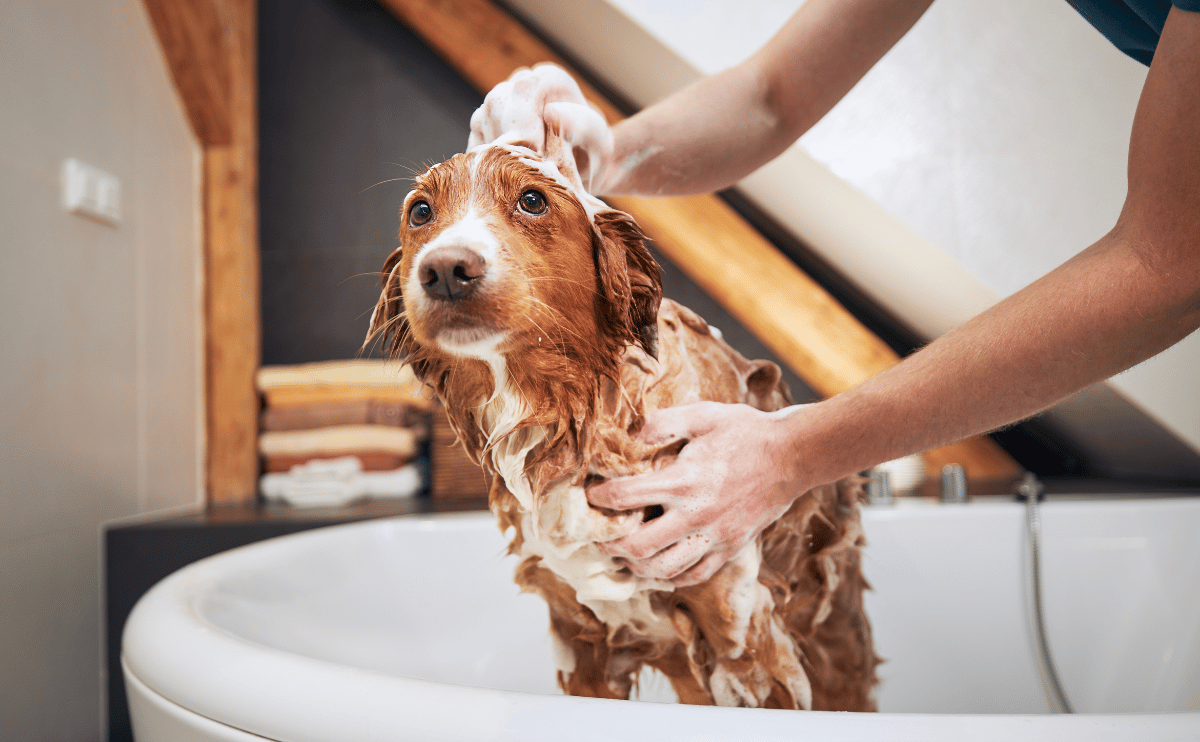
Splish splash, does your dog need a bath? Most humans shower once daily, but how often should you wash your dog? Well get down and dirty with the facts on how to keep your furry friend looking fresh and clean to ensure a happy, healthy pup.
How Often Should I Bathe My Dog?

According to an Honest Paws study, 56% of pet parents dont bathe their dogs as frequently as they should, and 60% use the sniff test when deciding when its bath time.
Bathing your dog isnt just good for their hygiene. Its also an excellent chance to check for unusual scratches, bumps, fleas, and other abnormalities. These things are easier to see when their hair is wet and flat against their body.
But how often should you wash your puppy? There are a few factors that determine your pups bath routine:
- Hair Length: Does your dog have long hair that can trap dirt and debris? Or are they short-haired and less susceptible to getting grimy?
- Activity Level: A dog who is mostly indoors and stays out of trouble when theyre outside is probably cleaner than a dog who likes to dig holes, play in the park, roll in waste, or go swimming.
- Allergies and Skin Conditions: Some dogs have skin allergies or other health conditions that make them prone to needing a bath more or less frequently. Learn more about dog skin allergies.
At a minimum, bathe your dog at least once every three months.You can wash your dog as frequently as every other week (with a gentle shampoo, it could be even more frequent). When in doubt, use your judgment if your dog starts to smell, its probably time for a bath. Its also a good idea to check with your veterinarian about how often to bathe your dog.
Can I Bathe My Dog Once A Week
Is it bad to bathe your dog every week? Or wondering can I bathe my dog twice a week? Its not recommended. Your dog needs natural oils produced by the skin to promote hair growth and good overall skin and coat health. Overbathing your dog could strip the skin of these natural oils, leading to irritation and dryness. So dont overdo it!
9 Benefits Of Bathing Your Dog
Bathing your dog is an essential aspect of their overall health and well-being. While dogs are generally good at grooming themselves, regular baths provide several benefits:
- Removal of Dirt and Debris: Bathing helps remove dirt, debris, and loose hair from your dogs coat. This is particularly important for dogs that spend time outdoors and may come into contact with allergens, parasites, or pollutants.
- Prevention of Matting: Regular baths help prevent the matting of your dogs fur, especially in breeds with long or dense coats. Matting can lead to skin irritation and discomfort.
- Reduction of Odors: Dogs can develop odors over time due to natural oils, outdoor activities, or skin conditions. Bathing helps control and reduce these odors, keeping your dog smelling fresh.
- Flea and Tick Prevention: Regular bathing, especially with flea and tick shampoos, can help prevent infestations. Its essential to use dog-safe products to avoid skin irritation and adverse reactions.
- Removal of Allergens: Dogs can be allergic to certain substances, and their skin may react to allergens present in the environment. Bathing helps remove potential allergens and provides relief for dogs with sensitive skin.
- Early Detection of Issues: Bathing allows you to closely examine your dogs skin, coat, ears, eyes, and other body parts. This regular inspection helps you detect any abnormalities, lumps, bumps, or signs of infection early on.
- Positive Interaction: Bathing provides an opportunity for positive interaction and bonding between you and your dog. It helps build trust and reinforces the relationship between pet and owner.
- Positive Exposure to Grooming: Regular bathing and grooming from an early age help your dog become more accustomed to the grooming process. This can be particularly beneficial for grooming procedures that may be necessary for their health, such as nail trimming and ear cleaning.
- Cooling Effect: In hot weather, a cool bath can help regulate your dogs body temperature. However, its important not to bathe your dog too frequently, as excessive bathing can strip away natural oils and lead to dry skin.
While bathing is important, its crucial to strike a balance and not overdo it. The frequency of baths depends on your dogs breed, activity level, and overall health. Consult with your veterinarian to determine an appropriate bathing schedule and to choose the right products for your dogs specific needs. Additionally, always use dog-safe shampoos and conditioners to avoid skin irritation.
CBD Oil Can Help Calm A Dog Before Bath Time
Many dogs become anxious when its time to hop in the tub. To help ease your dogs anxiety, you could give your dog a little CBD oil or a CBD-infused treat. Give your vet a call before administering any CBD products, and talk to them about if your dog is a good candidate for CBD. We also recommend contacting the products manufacturer to check with them first.
How To Bathe A Dog: 8 Bathing Tips
How do you bathe a dog correctly? It can be tricky trying to tame your pup in the tub while also washing them. Thanks to these tips, giving a dog a bath is easier than you think. Try these simple steps to ensure you have a successful bath time with your furry friend.
1. Buy Shampoo & Other Supplies
Use a dog-specific shampooto prevent suds from stinging your dogs eyes. We recommend you use a hypo-allergenic and all-natural shampoo to reduce potential skin irritations and dryness. Have a rubber or non-stick bathmat handy for the tub to keep them from slipping and sliding too much (both inside and outside the tub). Also, have cotton balls ready to place in their ears to block water out gently.
Personal Experience With Dog Soap
WashBar sent a sample of their Natural Dog Soap Bar in exchange for an unbiased review.
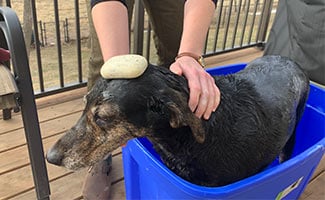
Before using this soap bar, I used liquid dog shampoo that came in a plastic bottle. Now that Ive used this bar of soap, Ill never go back. Using a bar of soap is so much easier than using a bottle of liquid soap because it frees up one hand to hold my dog while I use the other hand to scrub and lather my dogs skin and fur. This especially helps with getting my dogs belly and underside. I also like that this WashBar soap has zero waste. It comes in a cardboard box, so theres no plastic used. One bar of soap is equivalent to over 20 oz of liquid shampoo. This is important to me because I try to limit my plastic use in other items I purchase, so why wouldnt I do the same for my dogs shampoo.
Kimberly A., Canine Journal
2. Dont Forget To Brush
This step can easily get overlooked. Before bath time, prep your pup by giving them a thorough brushing to get rid of tangles and excess hair. Need a brush? Youre in luck. Weve recommended the best dog brushes for you.
3. Pick A Spot (& Stick To It)
Wondering how to bathe a scared dog? Consistency is critical when it comes to keeping your pet clean and calm. Bathing can be uncomfortable, so having a place they are familiar with will ease their fears or at least let them know what to expect.
A lick pad is a great wayto get your pup to sit still during a bath. Just stick the pad to the side of the tub or countertop (if your dog bathes in the sink) and add peanut butter. This combo will keep your pup distracted and entertained so you can focus on cleaning.
If you live in a smaller apartment, a bathtub with a handheld shower sprayer is sufficient. If they are smaller or a puppy, you could also use the sink. There are special tubs just for bathing dogs, but if you are already tight on space, the sink or tub might not be a good option.
Have an outdoor area and live where the temperature to bathe dogs outside is warm year-round? Then outside might be a better option, but make sure its on a flat, sturdy surface like concrete or a deck, so youre not counterproductively washing them in the muddy grass or yard. A kiddie pool can double as an outdoor doggy spa too.
You might also consider trying a hose attachment like the Aquapaw. As seen on Shark Tank, the Aquapaw has a soft, silicone brush with a handle on the end of the hose that allows you to control the water flow with a button on top. Its easy to grip and gently massages your pup while you wash them no need for a bucket of water or tub. Canine Journals founder had the opportunity to experience the Aquapaw in exchange for an honest review.
Our Personal Experience With Aquapaw![]()
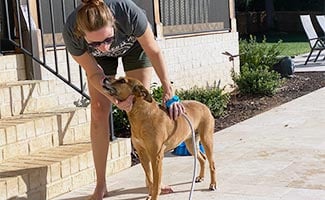
We attached this grooming brush to the hose outside, and it was so much better than anything I have ever tried for bath time. Our dogs preferred the gentle rub and brush to the typical cold spray of water from our shower wand. It was also fast and relatively painless for all. I will definitely use it again and recommend it to anyone seeking a less stressful dog bath experience.
Michelle S., Canine Journal
4. Gather Before You Lather
Once your pup is wet, youll have your hands full, so having everything you need nearby is necessary. Set aside a clean towel, a cup for rinsing (if need be), and treats for afterward (or during for good behavior). Never leave a dog unattended in the tub, and if youre outside, make sure your dog is contained or on a leash.
5. Some Like It Hot: Water Temp Matters
Can I bathe my dog in cold water? is a common question we hear.
Lukewarm-to-slightly warm water is ideal. Never use scaldinghot water, as it canburn your dogs skin. Think of what would be good for a newborn baby or a small child. Not too hot, not too cold.
6. Clean From Bottom To Top, Rinse From Head to Tail
Follow the instructions on the shampoo bottle, then lightly lather the soap in a circular motion paying particular attention to their paws and other places prone to dirt. Start with their feet and work your way up to their face last.
This will stop the soap from dripping into their eyes and ears and cut down on shaking. Rinse starting from the head and work your way down until the stream is clear. This helps the shampoo wash down and away from their sensitive spots.
7. Towel (Or Blow) Dry
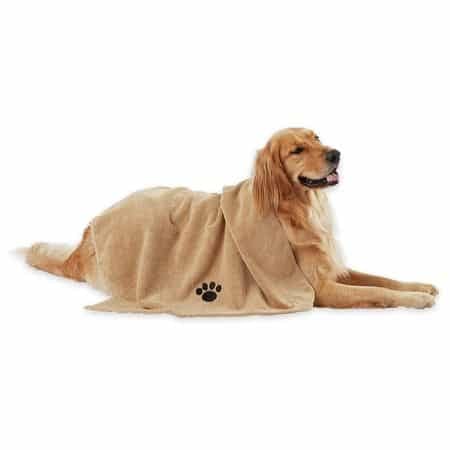
Covering your pup in a towel retains heat and lessens the chances of them shaking water all over you (and your house). If its cold or your dog has long hair that takes longer to dry, you might consider using a dog blow dryer to speed up the process.
8. Make It Fun!
Are you trying to figure out how to give a dog a bath that hates baths? Make it enjoyable! Bathing can be a bonding experience for both you and your dog. Take baby (or puppy) steps, introducing them to water and working up to a full bath. Dont take the plunge right away. Be patient and gentle. If your dog senses you are stressed out, they will be too. Make sure you reward with treats and show lots of love and affection.
8 Steps To Bathing Your Dog (Infographic)
To summarize, here are the eight steps for bathing a dog in a visual format to reference easily.

Watch A Dog Get A Bath (Video)
Check out this 90-second video to see an expert from PetCo bathe a Lab using some of the tricks and techniques we shared above.
Can I Give A Dog A Bath Without Water?
Looking for how to give a dog a bath at home without water? Its possible to use quick bath dog wipes to calm down the stink. They reduce bacteria and odors. Wipes are always good to have on hand, especially in the car for those dirtier post-dog park moments. Check out our reviews of the best dog wipes. You can also use a dog brush to get the grime out.
If your dog is dirty and you are thinking, can I bathe my dog everyday? No. But another option is waterless or dry dog shampoo. It can come in various forms, including spray, powder, or mousse, and is designed to leave your dog looking and smelling fresher without adding water. This can be helpful between baths or if your dog is scared of water.
Lastly, if your dog starts to stink up the house, you might want to try a pet odor-neutralizer.
How Often To Bathe Puppy Dogs
Puppies generally do not need to be bathed as often as adult dogs. Their coats are not fully grown yet, and they typically are not going outside as much (or around other dogs until they get their vaccination shots). You can bathe a puppy as needed if they get particularly dirty or smelly. As with any dog, if your puppy has any skin issues or allergies, you should consult with your veterinarian on how often to bathe them.
Other Ways To Improve Your Pups Quality Of Life
Just like humans like to be clean, dogs enjoy being clean too. The only difference is that dogs can lick themselves every so often they mostly rely on their pet parents to help with hygiene. In addition to bathing, you can improve their quality of life by brushing their teethand giving them a full groom regularly.
Tagged With: Grooming, Reviewed By Dr. Pendergrass, DVM
